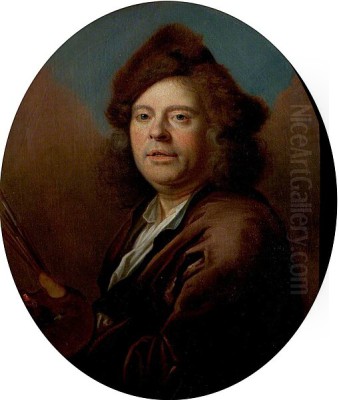
Jan Siberechts stands as a significant, if sometimes overlooked, figure in the transition of landscape painting from its continental roots to its burgeoning development in England during the late 17th century. Born in Antwerp in 1627 and dying around 1703, likely in London, Siberechts carved a unique niche for himself, first in his native Flanders and later as a pivotal artist in depicting the English countryside and the estates of its nobility. His work bridges the robust naturalism of Flemish tradition with the emerging taste for topographical accuracy and pastoral charm in Britain, leaving an indelible mark on the course of art history.
Early Life and Artistic Formation in Antwerp
Jan Siberechts was baptized in Antwerp on January 29, 1627. His father, also named Jan Siberechts, was a sculptor, suggesting an early immersion in an artistic environment. Antwerp, at this time, was a vibrant artistic hub, though past its absolute zenith of the Rubens era, it still maintained a strong tradition of craftsmanship and artistic innovation. The Guild of Saint Luke, the city's powerful artists' collective, was central to any aspiring painter's career. Siberechts was formally admitted as a master into the Antwerp Guild of Saint Luke in the guild year 1648-1649. This membership signified his official recognition as a trained and competent artist, allowing him to take on apprentices and sell his work independently.
In 1652, Siberechts married Maria-Anna Croes in Antwerp, further establishing his life and career within the city. His early works from this period demonstrate a keen observation of his native Flemish countryside. He was not alone in depicting rural life; artists like David Teniers the Younger were immensely popular for their peasant scenes, though Siberechts' approach often carried a different, perhaps more serene and less boisterous, sensibility. The influence of the broader Netherlandish landscape tradition, with its emphasis on atmospheric effects and detailed rendering of nature, is evident.
The Flemish Period: Developing a Unique Vision
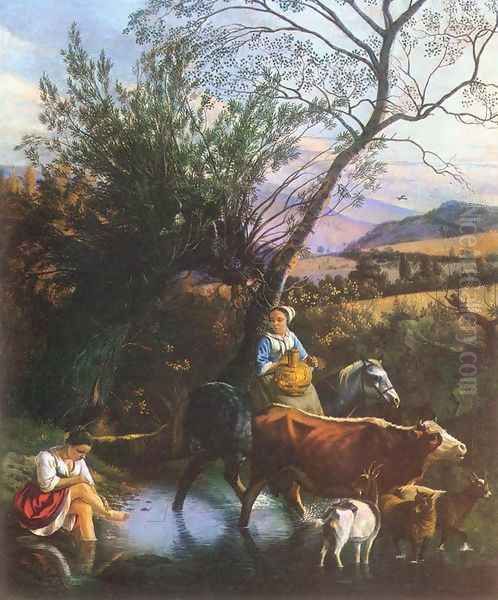
During the 1650s and 1660s, Siberechts developed a distinctive style focused on the Flemish landscape, often populated with sturdy peasant figures, particularly women, engaged in daily agricultural tasks or fording streams. These figures are not mere accessories but integral parts of the composition, rendered with a sense of solidity and dignity. His palette during this period was characterized by cool, silvery light and a careful balance of blues, greens, and earthy tones. Works like "The Ford" or "Farm Waggon in a Stream" exemplify this phase, showcasing his ability to capture the damp, verdant quality of the Flemish countryside.
His compositions often feature a slightly elevated viewpoint, allowing for a panoramic sweep of the landscape, and a meticulous attention to detail in foliage, water, and the textures of rural life. Unlike some of his contemporaries who might romanticize or idealize peasant life, Siberechts presented it with a degree of unvarnished realism, yet imbued with a poetic tranquility. The influence of earlier Flemish masters like Jan Brueghel the Elder, with his detailed landscapes, or even the atmospheric depth found in the works of Joos de Momper, can be discerned as part of the artistic heritage he built upon.
The Italianate Influence
A significant current in Netherlandish art during the 17th century was the "Italianate" style, adopted by artists who had travelled to Italy or were influenced by those who had. These painters, such as Nicolaes Berchem, Jan Both, Karel Dujardin, and Adam Pynacker, depicted idealized Italian landscapes bathed in warm, golden light, often featuring classical ruins and pastoral figures. While it is not definitively proven that Siberechts himself travelled to Italy, some of his earlier works show an engagement with Italianate conventions, particularly in the handling of light and the inclusion of motifs that suggest a southern clime.
It's possible he absorbed these influences through contact with returning artists in Antwerp or through prints. Some scholars suggest a possible trip around 1653. His early works sometimes feature a warmer palette and more generalized forms than his later, more topographically specific English paintings. However, Siberechts never fully adopted the idealized Arcadian vision of the dedicated Italianates. His inherent Flemish realism remained a dominant characteristic, grounding his scenes in a tangible reality even when employing Italianate lighting or compositional devices. The work of Jan Asselijn, another prominent Dutch Italianate, also provides a comparative context for this trend.
The Call to England: A New Chapter
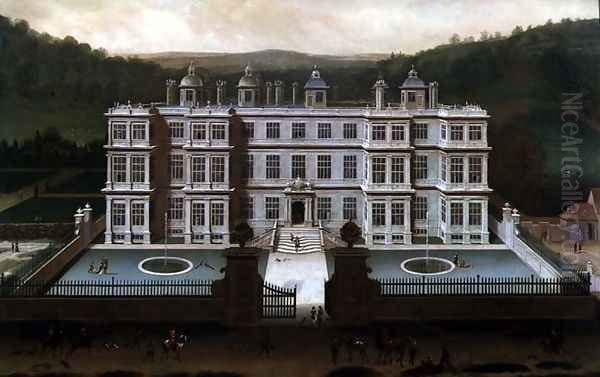
The pivotal moment in Siberechts' career came in the early 1670s. George Villiers, 2nd Duke of Buckingham, a prominent and often controversial figure in the English court, is credited with "discovering" Siberechts, possibly during a visit to the Southern Netherlands. Impressed by his talent, Buckingham invited Siberechts to England, likely between 1672 and 1674. This move marked a significant shift in Siberechts' life and art, transplanting him from the familiar artistic environment of Antwerp to the burgeoning, but different, art scene of Restoration England.
In England, landscape painting as an independent genre was still developing. While artists like Wenceslaus Hollar had produced detailed topographical views and prints, and painters such as Hendrick Danckerts and Robert Streater were active, the demand was often for decorative landscapes or views integrated into portraiture. The arrival of foreign artists like Siberechts, and later others, played a crucial role in elevating the status and shaping the direction of landscape painting in Britain. For Siberechts, England offered new patrons and new scenery, prompting an adaptation and evolution of his style.
Pioneering English Landscape Painting
Upon his arrival in England, Siberechts quickly found patronage among the English aristocracy and gentry, who were increasingly interested in having their country estates and surrounding lands depicted. This led to a shift in his subject matter towards more specific, topographical views of particular locations, rather than the generalized Flemish farm scenes. He became one of the earliest continental painters to specialize in these "house portraits" or estate views in England.
His English landscapes are characterized by their detailed accuracy, capturing the specific features of a building, its gardens, and the surrounding countryside. He often employed a panoramic format and a slightly elevated viewpoint, similar to his Flemish works, which allowed for a comprehensive depiction of the estate and its setting. These paintings served not only as artistic representations but also as records of land ownership and status. His meticulous rendering of trees, water, and architectural details provided a faithful image of his patrons' domains.
Key Commissions and Patrons
One of Siberechts' most notable early patrons in England, after the Duke of Buckingham for whom he worked at Cliveden House, was Sir Thomas Thynne. Around 1675-1676, Siberechts painted a series of views of Thynne's newly built mansion, Longleat in Wiltshire. These paintings, including the famous "View of Longleat," are remarkable for their scale and detail, showing the house from different angles and emphasizing its grandeur within the expansive parkland. They are considered seminal works in the history of English topographical painting.

He also undertook commissions for other prominent landowners. His series of views of Wollaton Hall and Park in Nottinghamshire, painted for Sir Francis Willoughby, further cemented his reputation. Later in his career, he painted views of Chatsworth House in Derbyshire, around 1699-1703, for the Duke of Devonshire. These works often included figures engaged in everyday activities – farming, hunting, or strolling – adding life and context to the architectural focus. The "Henley-on-Thames" series, created between 1682 and 1697, showcases his skill in capturing river landscapes and the bustling life along the Thames, demonstrating an interest beyond just static estate portraiture.
Artistic Style and Techniques in England
While adapting to the demands of his English patrons for topographical accuracy, Siberechts retained many elements of his Flemish training. His handling of light remained a key feature, often suffusing his English scenes with a cool, clear illumination that highlighted the textures of stone, foliage, and water. His palette, while sometimes brightened by the inclusion of figures in colorful attire (a characteristic also seen in his Flemish period with robust peasant women in red, yellow, or blue garments), generally maintained a naturalistic tone suited to the English climate and landscape.
He continued to pay close attention to detail, meticulously rendering individual trees, plants, and architectural features. His compositions were carefully structured, often leading the eye through the landscape towards the main subject, be it a house or a particular natural feature. The figures in his English landscapes, while sometimes more refined to reflect the status of his patrons, still possess a sense of solidity and presence. He often used limited preparatory sketches, building up his compositions directly on the canvas with rich color and a confident handling of paint, which lent his work a sense of immediacy and vibrancy. This approach, with its bold use of color and light, can be seen as prefiguring some aspects of later realism.
Representative Masterpieces
Several works stand out in Siberechts' oeuvre, defining his contribution to art history.
"View of Longleat" (c. 1675-1678) is perhaps his most famous English work. It showcases the magnificent Elizabethan prodigy house from a bird's-eye perspective, detailing its intricate architecture, formal gardens, and the surrounding parkland, complete with deer and figures. It is a prime example of the "estate portrait" genre he helped pioneer in England.
"The Ford" (c. 1660s), from his Flemish period, is characteristic of his earlier style. It depicts a group of peasants with livestock fording a shallow river, set against a lush, wooded landscape. The robust figures, particularly the women with their skirts hitched up, and the cool, silvery light are typical of his work before moving to England.
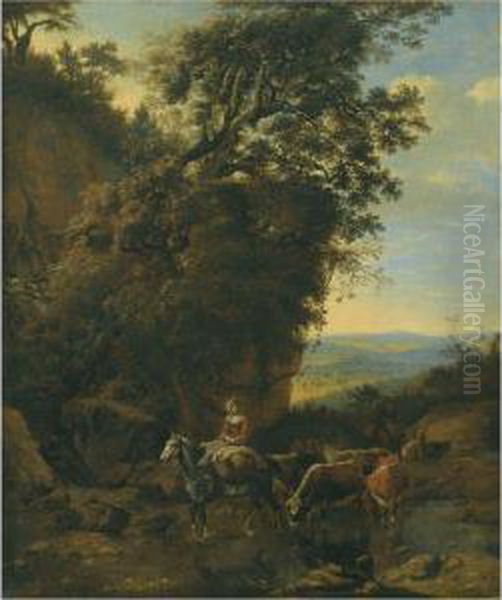
"Pastoral Scene" (c. 1665-1670) is another significant work from his Flemish period, illustrating his skill in composing idyllic yet realistic rural vignettes. It often features his signature robust countrywomen, children, and animals by a river, rendered with vivid colors and strong light-shadow contrasts.
"Henley-on-Thames from the Wargrave Road" (c. 1690s) is part of a series that captures the life and landscape around this important river town. These works are notable for their depiction of river traffic, bridges, and the surrounding countryside, showing his ability to handle broader, more dynamic scenes.
"View of Chatsworth" (c. 1699-1703) represents his later English work, depicting the baroque grandeur of Chatsworth House and its elaborate formal gardens. These paintings demonstrate his continued skill in topographical representation and his adaptation to the evolving tastes of his patrons.
"Crossing a Stream" (various versions) is a recurring theme in his work, both Flemish and English, allowing him to explore the interplay of figures, animals, water, and light. These scenes highlight his mastery in depicting reflections and the movement of water.
Contemporaries and Artistic Milieu
In Antwerp, Siberechts was part of a rich artistic environment. Besides David Teniers the Younger, other notable contemporaries included Jacob Jordaens, a collaborator of Rubens, and figure painters like Gonzales Coques. The landscape tradition was strong, with artists continuing the legacy of earlier masters.
Upon moving to England, he entered an art world dominated by portraiture, with figures like Sir Peter Lely and later Sir Godfrey Kneller holding sway. However, there was a growing interest in other genres. Besides Hendrick Danckerts, other Netherlandish artists like Abraham Hondius (known for animal and hunting scenes) and the marine painters Willem van de Velde the Elder and Younger were also active in England, contributing to the diversification of the art scene. Siberechts' focus on detailed landscape and estate views filled a particular niche. His work can be seen as a precursor to the great age of English landscape painting that would follow in the 18th century with artists like Richard Wilson, Thomas Gainsborough (in his landscape capacity), and later John Constable and J.M.W. Turner. While these later artists developed highly individual styles, the groundwork laid by painters like Siberechts in establishing landscape as a worthy subject was crucial.
Later Years and Legacy
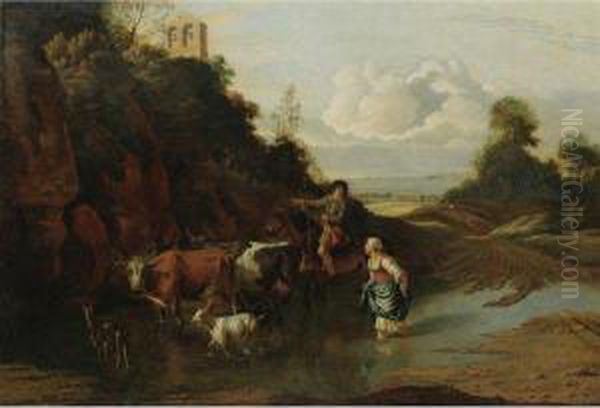
Information about Siberechts' later years is somewhat scarce. He continued to work in England, producing views of estates and landscapes. There is some debate about his exact date and place of death. While traditionally thought to have died in London around 1703 and buried there, some sources suggest he might have passed away slightly earlier, perhaps even returning to Antwerp, though the London death remains the more accepted view.
Jan Siberechts' legacy is primarily as a key figure in the development of English landscape painting. He brought a sophisticated continental tradition of landscape representation to England and adapted it to local tastes and requirements. His detailed and accurate depictions of country estates set a standard for topographical painting and provided invaluable historical records of these properties.
He is considered one of the founders of the English school of landscape painting, not necessarily through direct tutelage of a large number of pupils, but by introducing a style and subject matter that resonated with English patrons and influenced the direction of the genre. His ability to combine Flemish naturalism with a clear, almost scientific observation of specific locales was particularly significant.
His influence can be seen in the way subsequent generations of British artists approached landscape, moving towards a greater naturalism and an appreciation for the particularities of the British countryside. While he may not have achieved the same level of fame as some of his contemporaries or successors, his contribution was vital. His paintings are valued today not only for their artistic merit but also for their historical importance, offering a window into the appearance of 17th-century England and the lives of its landed gentry.
Conclusion
Jan Siberechts was an artist of considerable talent and adaptability. From his origins in the rich artistic milieu of Antwerp, where he developed a distinctive style of Flemish rural landscape, he transitioned successfully to the different demands of the English art market. His meticulous attention to detail, his skillful handling of light and atmosphere, and his ability to capture the essence of a place made him a sought-after painter of country estates and landscapes.
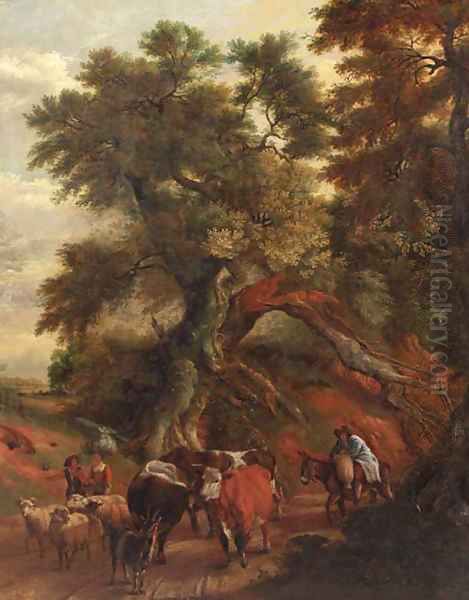
By bridging the gap between continental traditions and emerging English tastes, Siberechts played a crucial role in the early history of British landscape painting. His works remain a testament to his skill and provide a fascinating glimpse into the world he depicted, securing his place as a noteworthy figure in 17th-century European art. His influence, though perhaps subtle, was part of the foundational shift that would eventually lead to landscape painting becoming one of Britain's greatest artistic achievements.